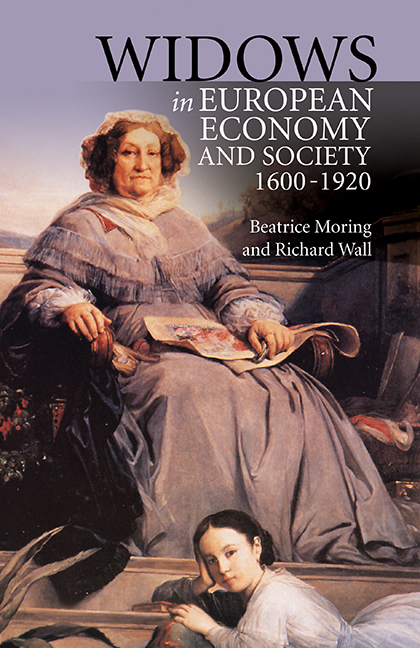Book contents
- Frontmatter
- Contents
- List of Plates
- List of Tables
- Acknowledgements
- Introduction
- 1 Widows and Poverty
- 2 Widows, Legislation and Property
- 3 Assessing the Assets of the Widow
- 4 Life Interest, Usufruct or Pension, The Mainstay of the Widow?
- 5 Urban Widows, Economy and Family
- 6 The Demography of Widowhood
- 7 Household Structure, Age, Social Status and Geography
- Conclusion
- Appendices
- Appendix 1 Abandonment
- Appendix 2 Widows and Poverty
- Appendix 3 Brief Life Histories of Poor Widows
- Appendix 4 Widows and Property
- Appendix 5 Contracts
- Appendix 6 Widows, Family and Work
- Appendix 7 Demography
- Appendix 8 Households
- Bibliography
Appendix 1 - Abandonment
from Appendices
Published online by Cambridge University Press: 30 August 2017
- Frontmatter
- Contents
- List of Plates
- List of Tables
- Acknowledgements
- Introduction
- 1 Widows and Poverty
- 2 Widows, Legislation and Property
- 3 Assessing the Assets of the Widow
- 4 Life Interest, Usufruct or Pension, The Mainstay of the Widow?
- 5 Urban Widows, Economy and Family
- 6 The Demography of Widowhood
- 7 Household Structure, Age, Social Status and Geography
- Conclusion
- Appendices
- Appendix 1 Abandonment
- Appendix 2 Widows and Poverty
- Appendix 3 Brief Life Histories of Poor Widows
- Appendix 4 Widows and Property
- Appendix 5 Contracts
- Appendix 6 Widows, Family and Work
- Appendix 7 Demography
- Appendix 8 Households
- Bibliography
Summary
While widows and abandoned women are frequently found in conjunction in British poor-law records, and in studies of working-class families, the situation was slightly different in Scandinavia. Before the nineteenth century, we primarily find abandoned women in the turbulent times of the seventeenth century, when husbands who had been drafted into the army never returned home. One of the reasons was the extensive record-keeping of the Lutheran Church. Since the seventeenth century, a person in Finland and Sweden moving parish had to request a certificate from the clergy for introduction into the registration of the parish of destination. During the eighteenth century, the necessity to comply was repeatedly underlined, because of the need to determine which parish would ultimately be responsible for the poor-relief costs, an issue not dissimilar to the problems facing the authorities in Britain. By the nineteenth century, it was rare for people to move without a certificate. In addition to the name and origin of a person, the certificate also contained information about marital state, which made bigamy more difficult than, for example, in Britain. As the destination was registered, as well as the point of departure, a certain amount of control over the whereabouts of people could be exercised. Because of this system, errant husbands could be searched for as long as they stayed within the country. After 1812, a similar system was widely in operation in Norway. While people did manage to slip through the net, particularly in the seventeenth century, even some of these were eventually caught: the question was put to them as to why they had not asked for a divorce, as they had been living apart, in different countries, for many years, and wanted to attach themselves to new partner. Divorce had been available since the introduction of the Reformation in the Nordic countries and in the Protestant parts of Germany. In Sweden, as in other Lutheran states, the reasons for divorce were abandonment and infidelity. However, if the Church authorities were unwilling to grant a divorce, other causes could be put forward in an application to the king. Generally, incarceration or chronic contagious disease were seen as adequate reasons.
- Type
- Chapter
- Information
- Widows in European Economy and Society, 1600-1920 , pp. 261 - 262Publisher: Boydell & BrewerPrint publication year: 2017

